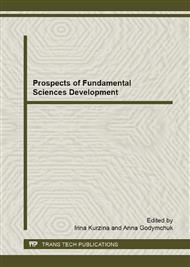p.250
p.255
p.260
p.265
p.270
p.276
p.280
p.284
p.289
Effect of High Intensity Pulsed Ion Beam of Carbon on Subsurface Layers of Zirconia Ceramics
Abstract:
The effect of high intensity pulsed beam (HIPB) of accelerated carbon ions on zirconia ceramics of the 97ZrO2-3Y2O3 (in mol %) composition is investigated. The parameters of the ion beam are as follows: the energy of the accelerated ions is 200 keV, pulse duration is 100 ns, pulse current density equal to 40 and 150 A/cm2. It was revealed that ions treatment of ceramics leads to melting of the subsurface layer. In this area, the grains are elongated towards the surface. Upon treatment of ceramics by accelerated ions with the pulse energy density equal to 3 J/cm2 (fluence ≥ 9.4•1015 cm–2), formation of zirconia cubic phases up to 30 mass % is observed. The size of coherent-scattering region X-rays of the grains of the c-ZrO2 phase is 15–20 nm. The analysis of the elemental composition of the irradiated surface layers by secondary ion mass spectrometry (SIMS) method makes possible to conclude that formation of high concentration of non-stoichiometric oxygen vacancies under ion treatment is the main cause of the cubic phase stabilization in zirconia.
Info:
Periodical:
Pages:
270-275
Citation:
Online since:
February 2015
Price:
Сopyright:
© 2015 Trans Tech Publications Ltd. All Rights Reserved
Share:
Citation:


